BY ERIN J. BERNARD
Economic diversity has proven a smart strategy for the Port of Hood River. How can other Oregon communities replicate the model?
BY ERIN J. BERNARD
Economic diversity has proven a smart strategy for the Port of Hood River. How can other Oregon communities replicate the model?
It’s a Tuesday in late summer, and the Hood River waterfront is positively humming. Windsurfers skip across the choppy Columbia River, picnickers tuck into brown-bag lunches and a band of kiteboarders huddles in the grass, prepping prototype equipment. The rich scent of roasting coffee and wood-fired pizza cuts the clipped breeze, and nearby businesses are busily churning out everything from microbrews to high-tech sports gear to meatless cold cuts.
Not long ago, things looked rather different here. Undeveloped land parcels, industrial boneyards and empty lots punctuated the length of Portway Avenue. There were no parks, few buildings and even fewer jobs.
Today, thanks to the leadership of the Port of Hood River and the vision of its surrounding community, the Hood River waterfront has come into its own as a lively testing ground for technology, industry and recreation.
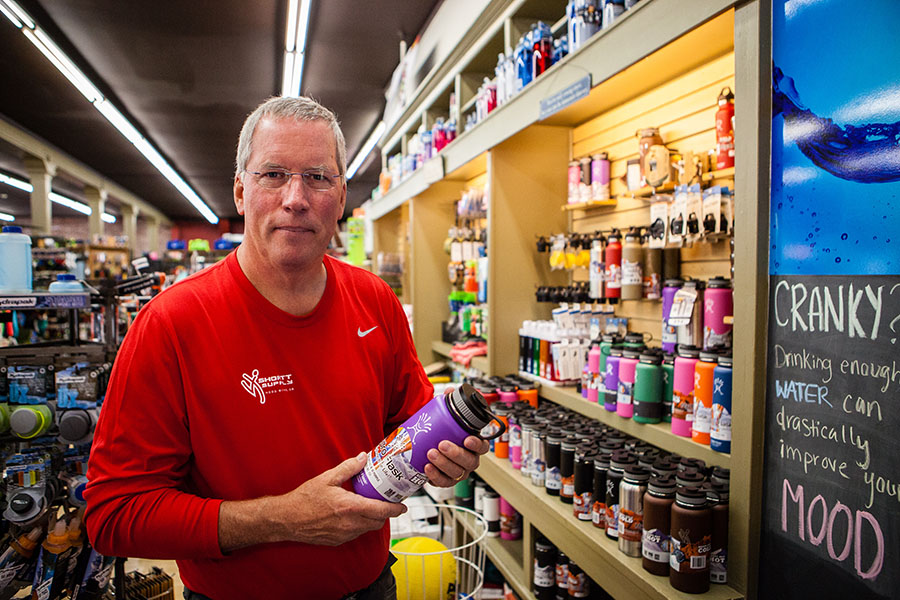
Port President Brian Shortt is an anchor retailer in the historic downtown shopping district, serving the sporting crowd of this athletically minded town.
Old Promise, New Ideas
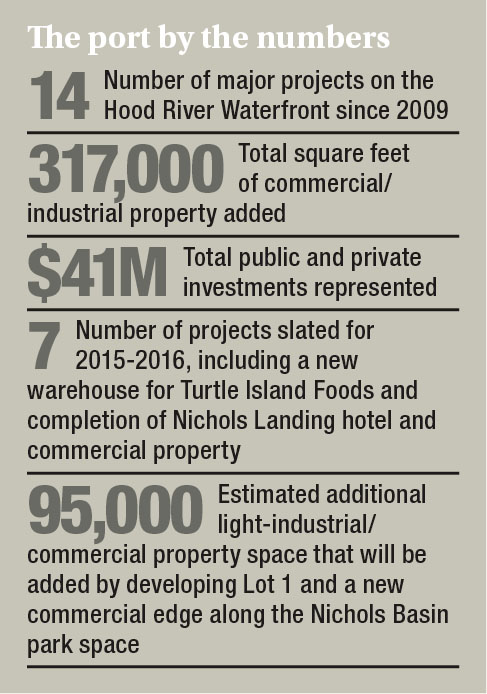 Located at the intersection of an interstate highway, a mainline railroad line and a shipping channel, this hardscrabble patch of infill laid down by the U.S. Army Corps of Engineers in the ’70s had long held promise.
Located at the intersection of an interstate highway, a mainline railroad line and a shipping channel, this hardscrabble patch of infill laid down by the U.S. Army Corps of Engineers in the ’70s had long held promise.
But the Port of Hood River, which owns and manages the waterfront, struggled to harness it. Over decades, big ideas came and went, many targeting manufacturing. An empty warehouse was turned into an Expo Center. There was talk of hotels, outlet malls and Burger Kings, none of which much appealed to the surrounding community, a tight-knit cluster of around 20,000 souls — many outdoor enthusiasts, many entrepreneurial, and all with strong ideas about how to grow.
By 2007 it was time for a reset. The Great Recession had arrived, but Hood River’s economy had a solid foundation thanks to strong heritage business sectors like agriculture and tourism. Executive director Michael McElwee had taken the Port’s helm, and it was time to tap the wisdom of that thoughtful crowd.
“The Port Commission backed up and said, ‘We need to first identify what the values are we’re trying to achieve, get input on those values and make sure what we’re doing is reflective of the community’s values,’” recalls McElwee.
Welcome the public, citizens advised the Port. Embrace sustainability. Don’t sell off shoreline property; embrace local businesses. And whatever you design, design it well.
From these directives evolved a strategy for transformation that began with construction of the 20,000-square-foot LEED-Silver Halyard Building in the heart of the waterfront.
Almost a decade later, that building is flanked by a colony of light-industrial structures housing everything from long-established manufacturers to homegrown startups. Around 300,000 square feet of light industrial and commercial property has now gone up, representing total public and private investments topping $41 million, with another $35 million in investments slated for the next two years.
Retail and restaurants are also hanging shingles. And just beyond, recreationalists launch into the water from a gorgeous Waterfront Park.
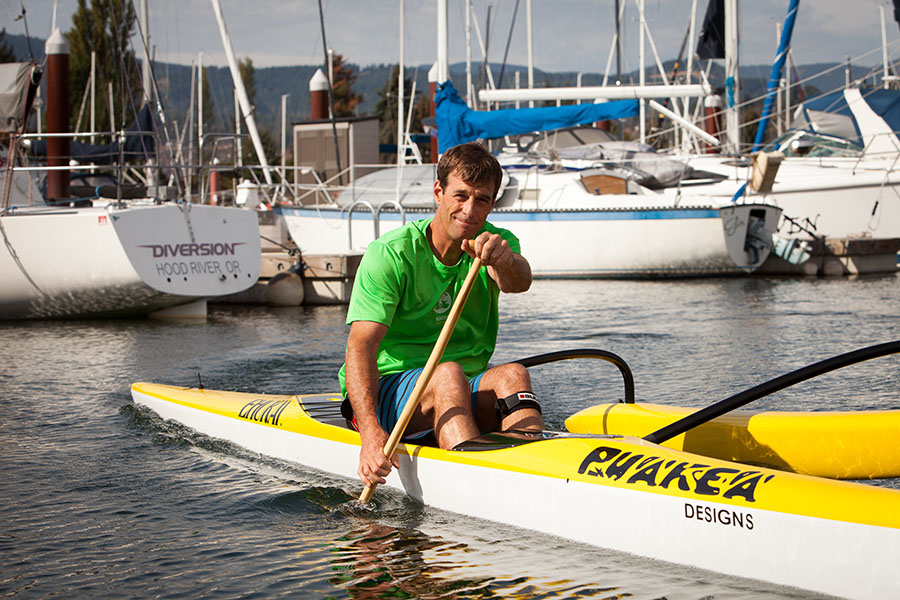
Commissioner Jon Davies has been a proponent of the supporting role recreation and tourism can play for the broader local economy.
Branding Hood River
In some ways, this confluence of industry and recreation materialized right from the earth and water.
Hood River’s unique geography caught the fancy of windsurfers in the ’80s, with a slew of other sports enthusiasts arriving in their wake. Scores came to visit. Some stayed on.
Many of the folks who settled at this windy crossroads were adventuring in spirit, and they parlayed their outdoorsiness into innovative sports-product endeavors. This was very good for the economy.
“Hood River’s got a brand, and the brand is outdoor lifestyle,” says McElwee. “It’s a compelling story for tourism, and it’s also a tremendous attractor for intellectual capital and resources.”
The waterfront was the meeting point of so many economic thoroughfares. The outdoor crowd envisioned a parallel recreational convergence, but selling the idea would take time.
There was definitely an ideological divide back then, says port commissioner Jon Davies.
“When I moved here, it was windsurfers versus the old guard, and the port was seen as the old guard,” he recalls.
Then the port donated to the city six acres of property for its nascent Waterfront Park, Davies says, and something shifted. “It really broke the logjam … it allowed things to move forward.”
The construction of the Halyard Building gave that materializing vision some much-needed momentum, notes port commissioner Fred Duckwall, who joined the Commission in 2001.
The port worked closely with private industry as well as the City itself to map a clear, mutually beneficial path forward as development progressed, he says, and that’s made all the difference: “Everybody understands the rules. And they’re reasonable from everybody’s perspective.”
“The investments of local firms like Turtle Island and Cloud Cap Technology was crucial for our success, as were big contributions by Key Development’s Jeff Pickhardt,” says McElwee.
Ports are eternally on “the tip of the spear” when it comes to guiding growth, says port commission President Brian Shortt, but what’s happening on the waterfront is proof positive that visions have aligned: “There’s a unique level of cooperation, and it’s one of the reasons we have this level of success.”
Port commissioner Hoby Streich, who is also chair of the Urban Renewal Agency, believes the close relationship between the port and the Hood River URA has been a key component of that success: “The port providing financing for URA capital improvement projects in turn strengthens the port’s projects on the waterfront that rely on those improvements,” he says. “It’s a great way to get things done.”
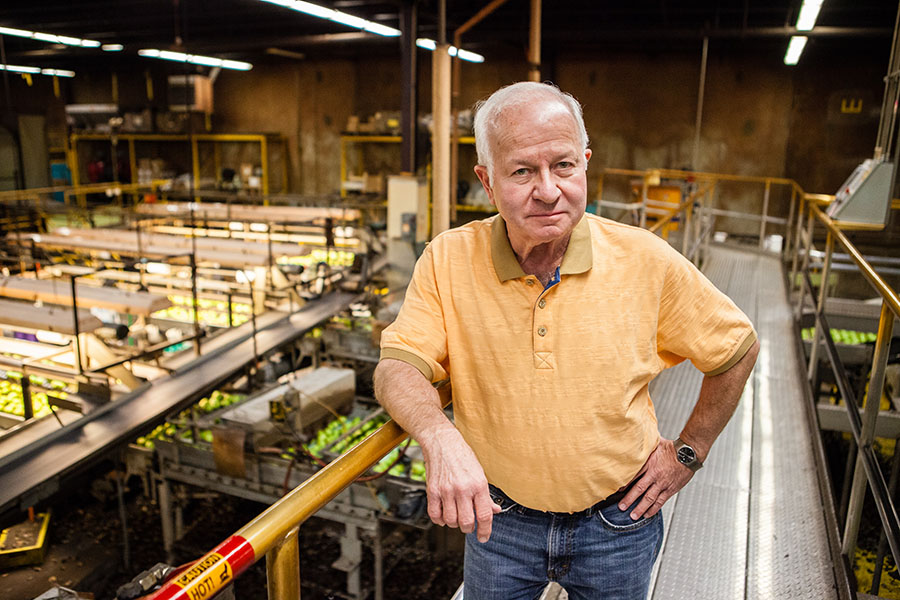
Commissioner Fred Duckwall has been a leader in Oregon agriculture for decades and a port commissioner since 2002.
A Rising Tide
This rising tide definitely floats all boats, says Jaime Athos, CEO of vegan food purveyor Turtle Island Foods, makers of Tofurky.
Turtle Island, which employs 100 and has a long historical footprint in town, recently expanded into the Jensen Building, another Port-owned waterfront property.
Athos was initially nervous about the increased pedestrian traffic, but the waterfront’s design allows industry and recreation to coexist harmoniously.
“It’s not just tourists,” he says. “Every day we see locals enjoying the trail, rigging up sails or kites and going out on the water. The proof is in the pudding.”
Things were certainly quieter when pFriem Family Brewers opened shop in the Halyard Building in 2011, recalls brewmaster and co-founder Josh Pfriem.
Sometimes, he’d go a whole day without seeing another living soul. But he was enchanted by the space: “It’s such a wonderful experience to get here and be in the dark mashing as you watch the sun rise over eastern hills. The whole brewery sparkles and lights up. You get to feel like you’re part of outside environment.”
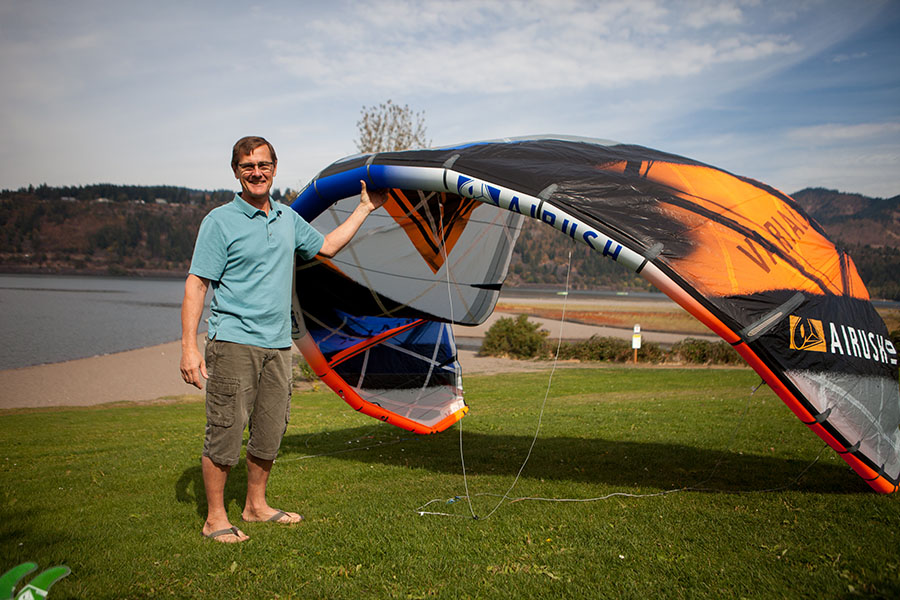
Commissioner Rich McBride works to create a culture of safety, service and support on the waterfront.
Pfriem’s operations now include a tasting room, a restaurant and over 60 employees, and today the waterfront is an essential part of its brand — one woman even commutes to work by standup paddleboard.
The economic fortunes of small towns rise and fall, but McElwee and the port commissioners firmly believe Hood River’s rich cross section of enterprise will fortify it for the long haul.
“The days of having a lumber mill or a United Telephone with 500 or 600 employees are behind us,” says Davies. “You want to build that diversity so when the downturn comes — and it will come — you’re more spread out.”
What might the waterfront look like in another decade? It’ll be healthy, active and largely built out, predicts McElwee. Already, the last big, empty lots are filling in, and a 2.5-mile walking path connecting the waterfront’s length is nearing completion.
It took some doing, says Davies, but the Hood River waterfront has finally arrived: “You go down there and you think, ‘Wow, this is pretty impressive considering that six or seven years ago, it was just dirt.’”
This is certainly a replicable economic model for other towns, says port commissioner Rich McBride, but having two volcanoes and a bridge across the Columbia doesn’t hurt.
“How do you create that kind of synergy out of thin air?” he asks. “It’s hard to do. I think we’ve been smart but also very fortunate.”



